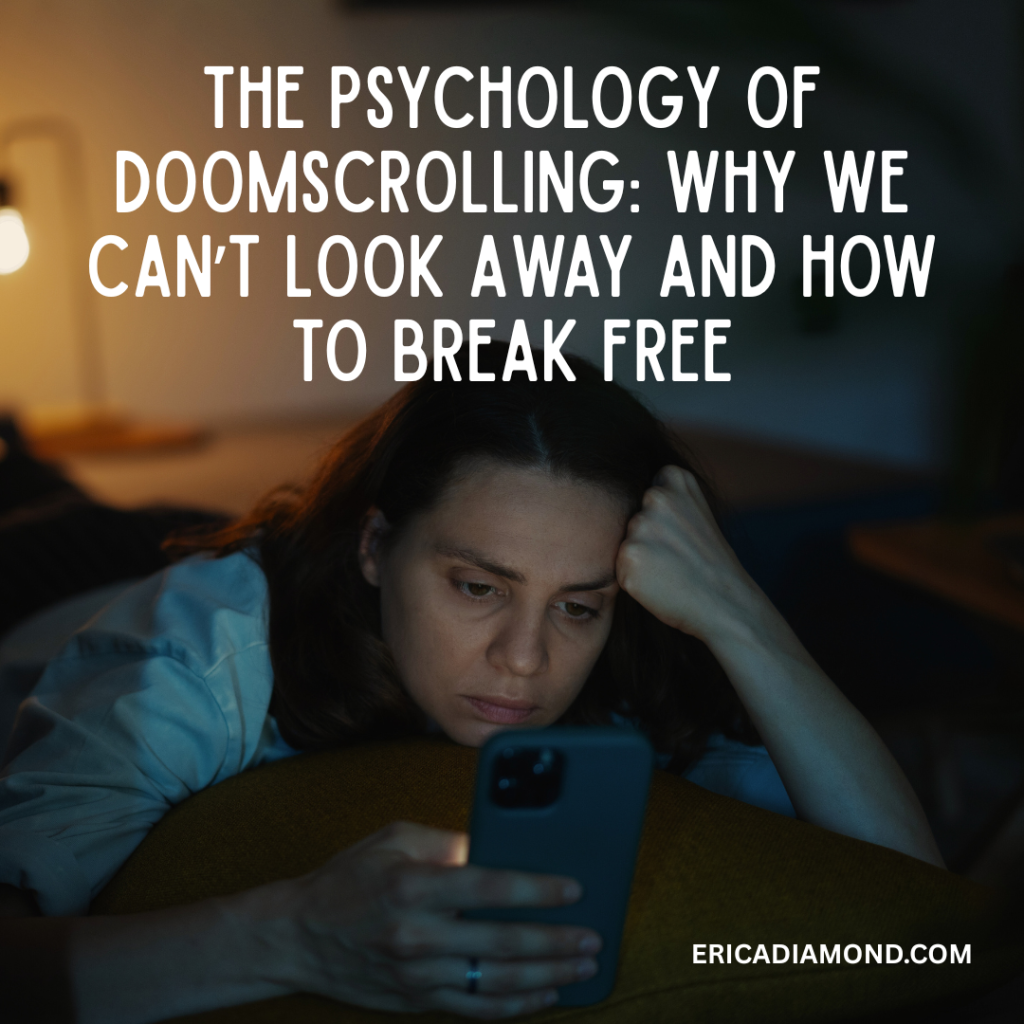
You know that moment when you grab your phone just to “check one thing”… and suddenly it’s an hour later, you’re deep into the world’s bad news, random memes, and someone’s cousin’s engagement photos? Welcome to doomscrolling—a harmless sounding habit that science tells us might actually be rewiring our brain for anxiety.
Doomscrolling is more than just a funny-sounding word; it’s a trap. Researchers have found that our brains are wired to pay attention to negative information—a survival tactic from our hunter-gatherer days. Sounds a little boring, I get it, but stay with me. Back then, noticing the rustle of a bush that could be a predator literally saved lives. Today, the “predators” are endless push notifications: the latest stock crash, political meltdown, or some TikTok influencer’s hot take on avocado toast. Our brains can’t resist it. It’s a cocktail of curiosity, fear, and—no surprise, a hit of dopamine. Each new headline is a tiny reward, and suddenly, you’re hooked.
One study from the University of Pennsylvania found that heavy social media use, particularly doomscrolling, is linked to increased rates of depression and anxiety. The more you scroll, the more your brain gets trained to expect negativity, creating a feedback loop that makes it harder to put the phone down. Essentially, our thumbs are becoming little engines of stress, powered by fear and outrage. And yet, we can’t stop.
I too have been guilty of this favorite pastime. I’ll admit it, I’ve been there. One recent rainy Sunday, I was curled up in my comfy blanket, planning to check the news “for five minutes.” Two hours later, I was doomscrolling videos about the absolute worst mom ever featured on Netflix’s The High School Catfish. Have you seen this documentary?? My coffee was long gone and I hadn’t moved in what felt like an eternity. And yet, I couldn’t stop doomscrolling these videos- it had this ridiculous superpower: it could make me care more about a stranger’s disastrous parenting than my own family’s dinner plans.
So, how do we break free? The good news is that understanding the psychology behind doomscrolling is the first step toward reclaiming your attention. Awareness creates choice. And once you realize that your brain is being tricked by a very modern version of an ancient survival mechanism, you can start to outsmart it.
Here’s how:
- Set Boundaries – Make Them Non-Negotiable and Visible
Instead of just allocating times, try making it concrete and trackable: “I’ll check news only from 7–7:30 a.m. and 8–8:30 p.m.” and turn off push notifications. Research shows out-of-sight is out-of-mind works wonders. - Curate Your Feed – Be Ruthless
Unfollow or mute accounts that trigger anxiety or FOMO. Follow 3–5 accounts that genuinely make you feel good or teach you something daily. Add a weekly “digital fall cleanse” to reassess your feed. - Practice Mindful Scrolling – Add Micro-Decisions
Every time you pick up your phone, ask yourself: “Am I scrolling to learn or is this just a habit?” This tiny pause interrupts the autopilot loop. - Replace the Habit – Stack It with Pleasure
Swap a doomscrolling session with something equally rewarding but less anxiety-inducing. Tidy up your nightstand so it’s calming when you get into bed tonight, dive into a new book, call a friend, listen to a great podcast, or journal about something you’re grateful for.
Bonus Tip:
Use Environmental Cues – Put your phone in another room when you’re doing something else, or charge it outside your bedroom at night. Out of reach = out of habit.
Here’s the kicker: breaking free from doomscrolling doesn’t mean becoming oblivious to the world. It means being intentional and choosing when and how you consume information so you stay informed without sacrificing your peace of mind. Think of it like putting on noise-canceling headphones for your mind—you still hear what’s important, but the chaos fades away.
Let’s be honest—there’s something absurd about reading 17 headlines, 12 cat memes, and a friend’s vacation updates at 2 a.m., all while fully knowing you’ll wake up tomorrow and have learned… basically nothing helpful. Doomscrolling is chaotic, but it’s also a big time waster and energy suck.
The good news? Doomscrolling actually reveals something profound about us: we are curious, aware, but also highly adaptable. Once we spot the tricks our brain is playing, we can retrain our habits, reclaim our calm, and stay informed– on our terms. And the best part? We can do it without turning into the lead investigator in The High School Catfish!
So next time you find yourself mindlessly scrolling, remember: your thumbs are powerful. Use them wisely. You get to decide what deserves your attention. The scroll isn’t in charge—you are.
I’d love your thoughts below.




